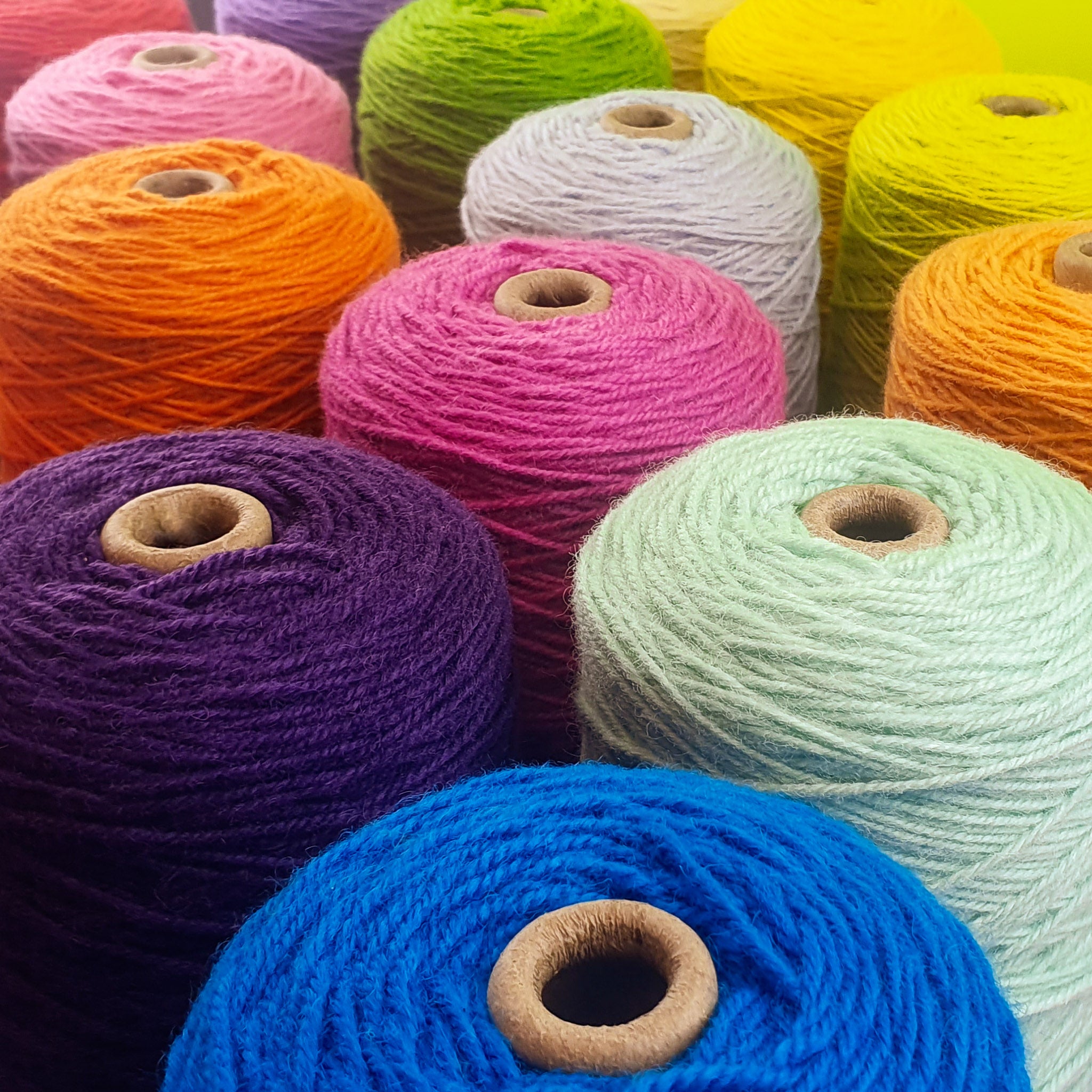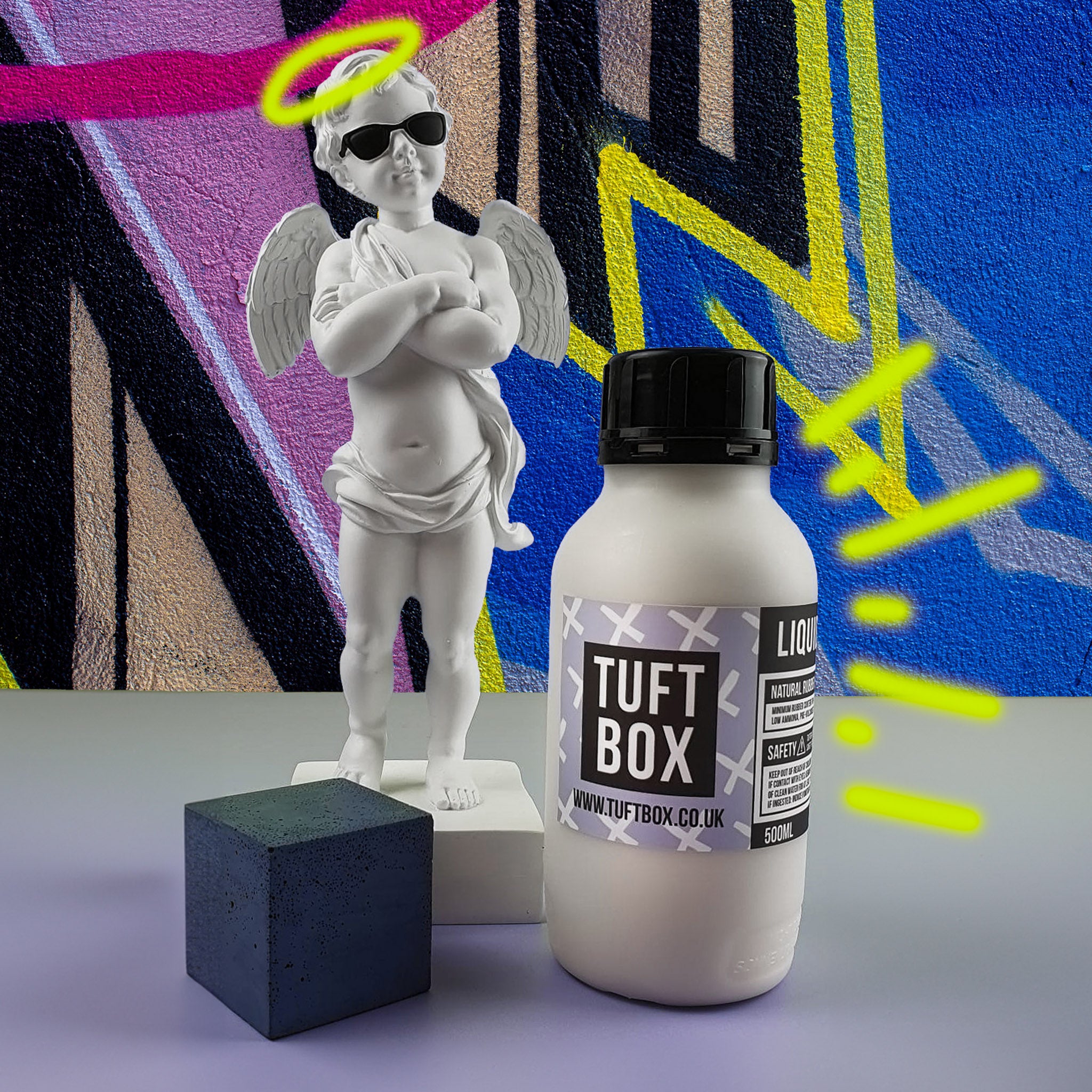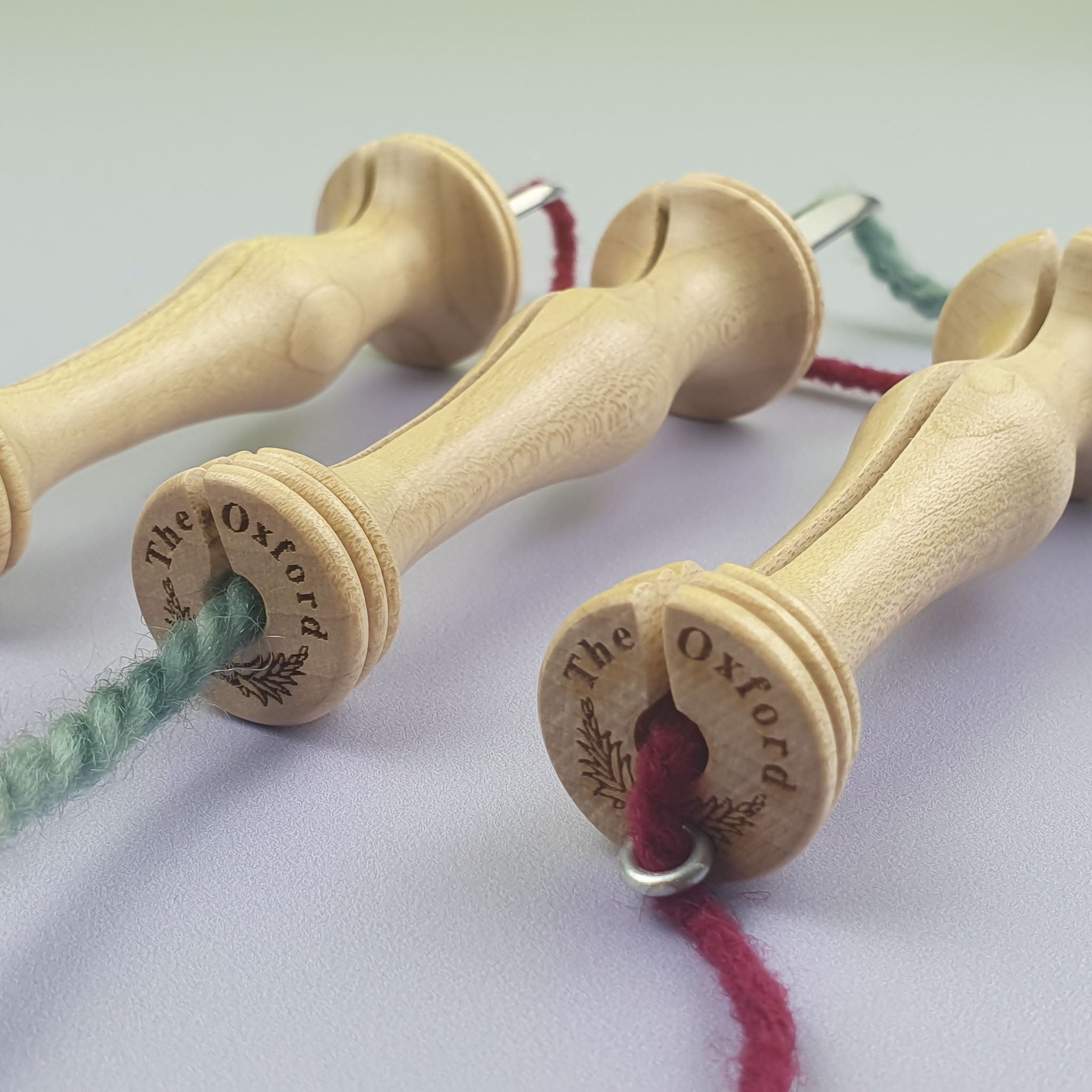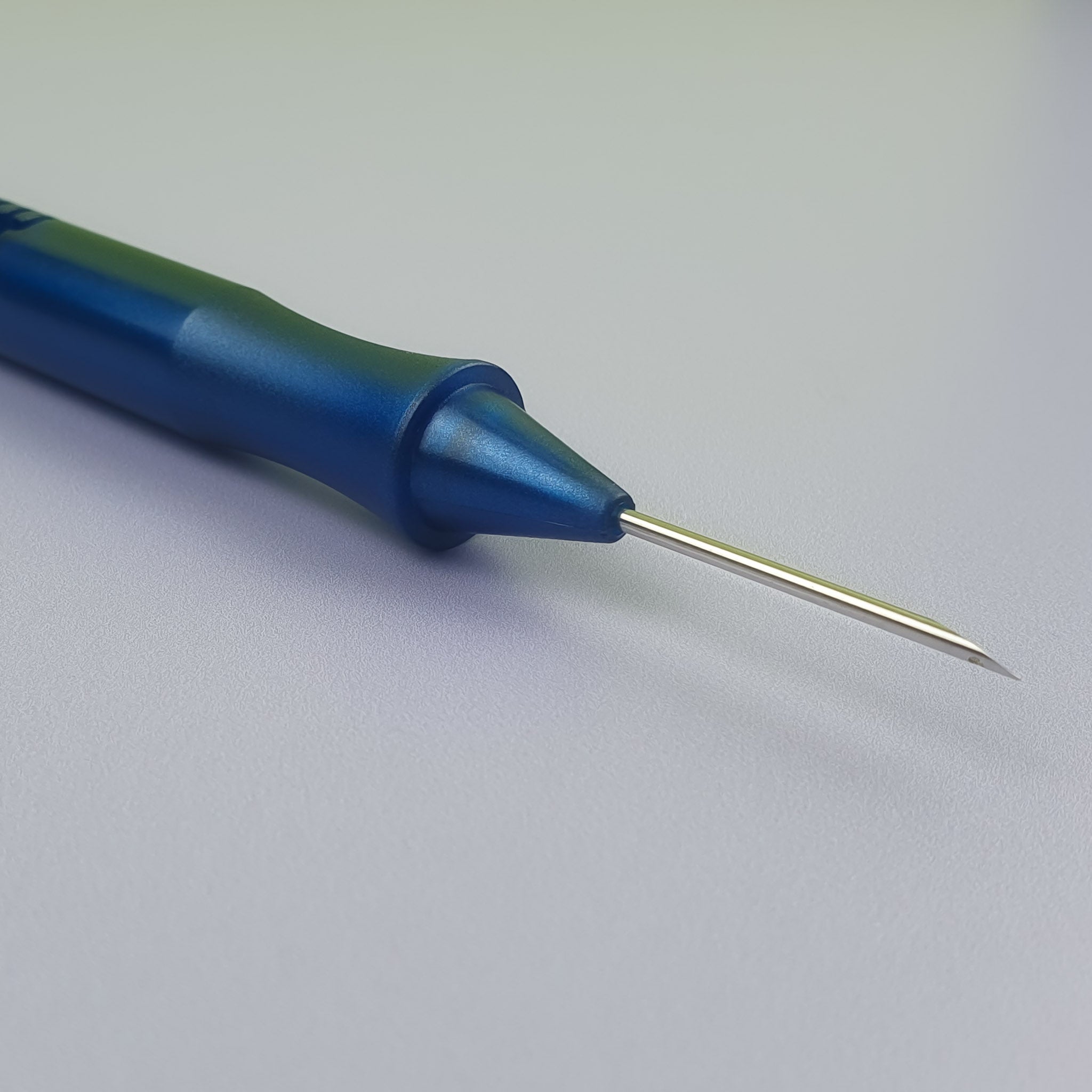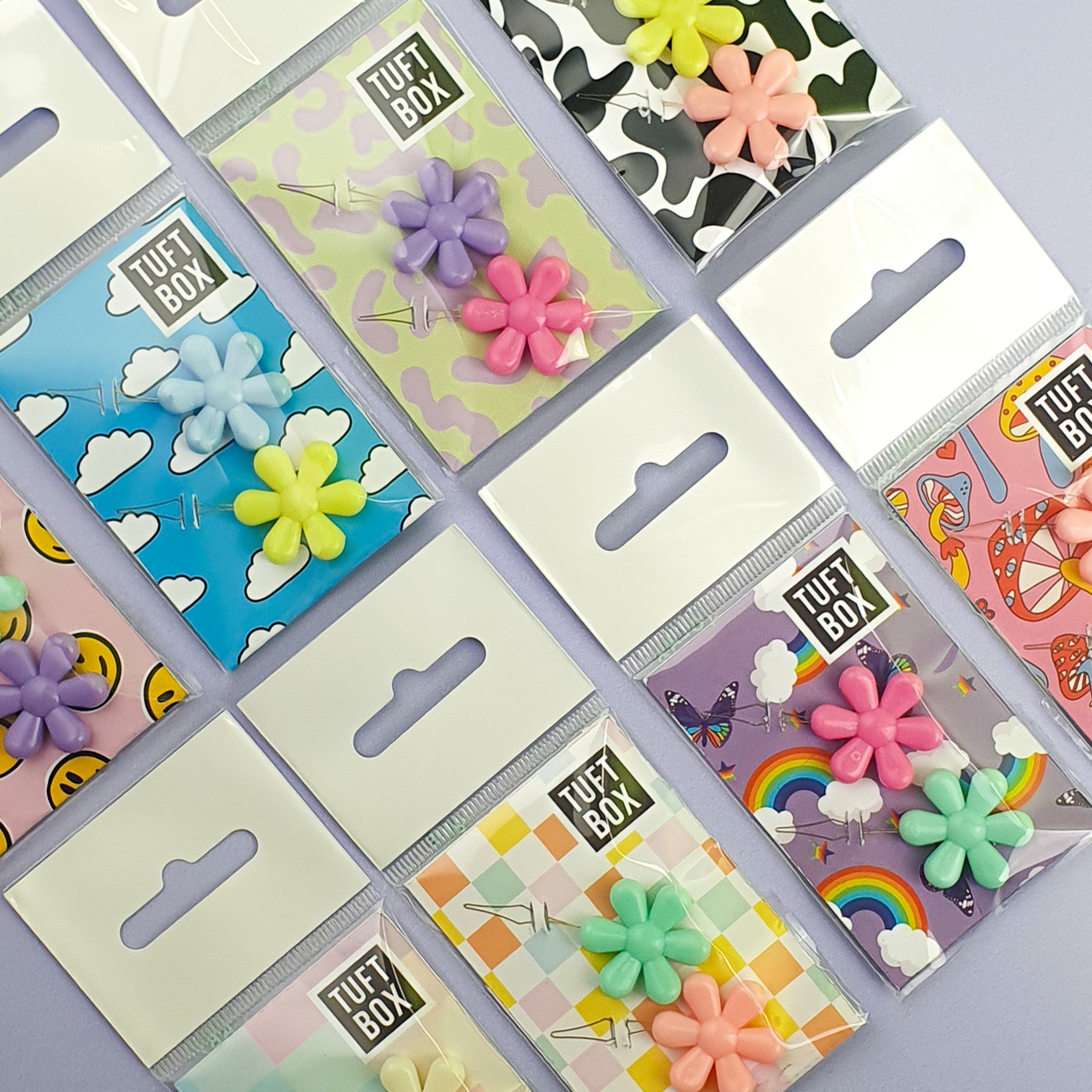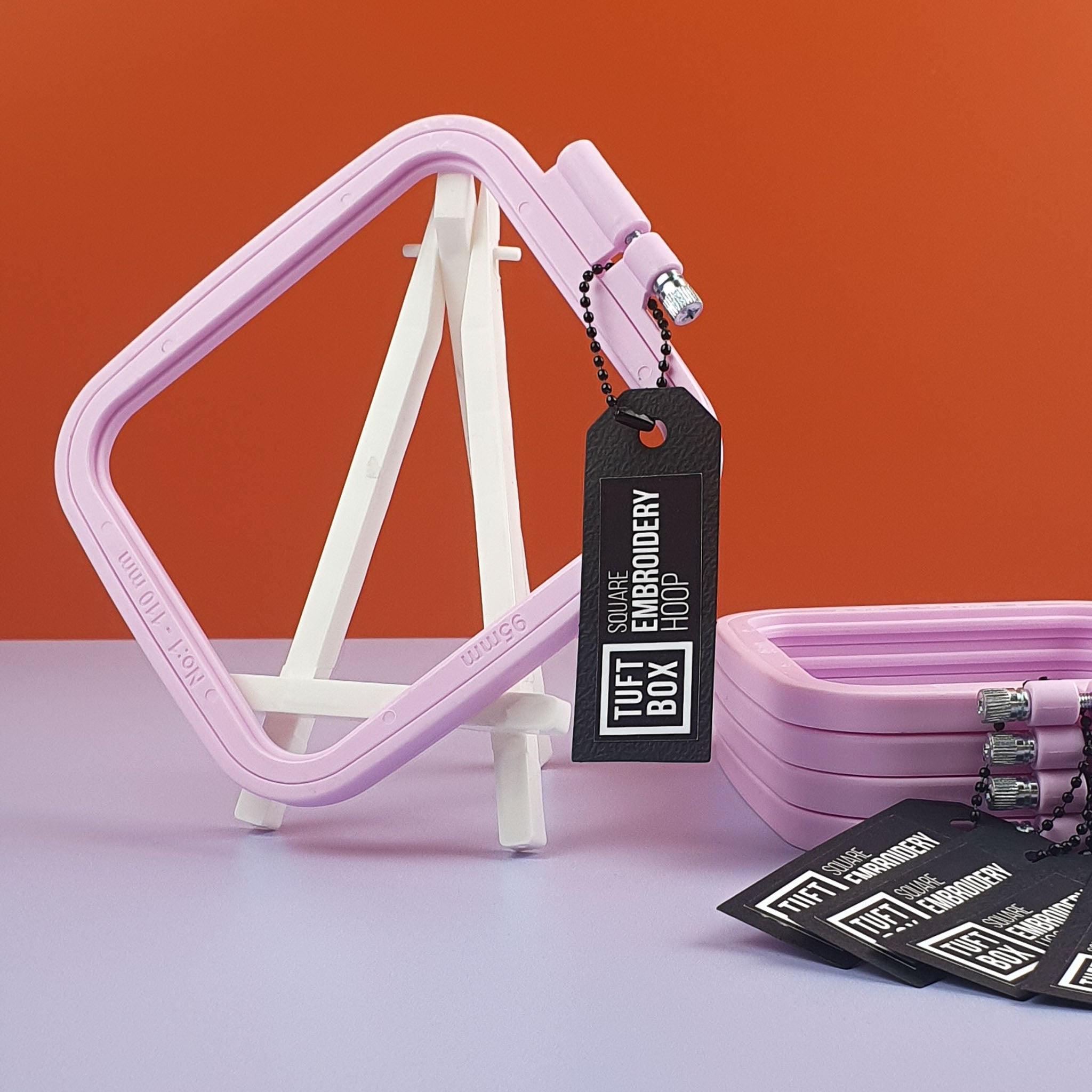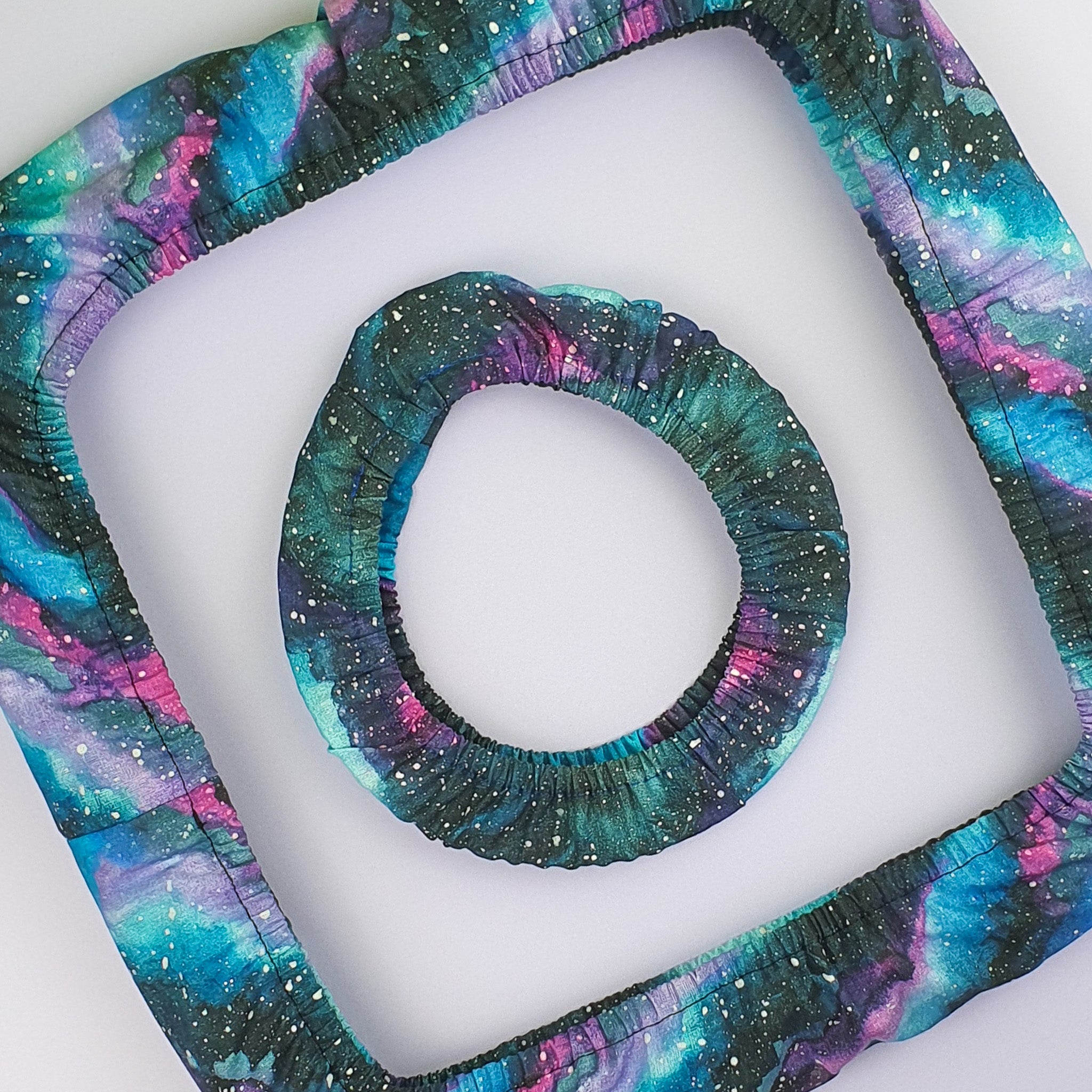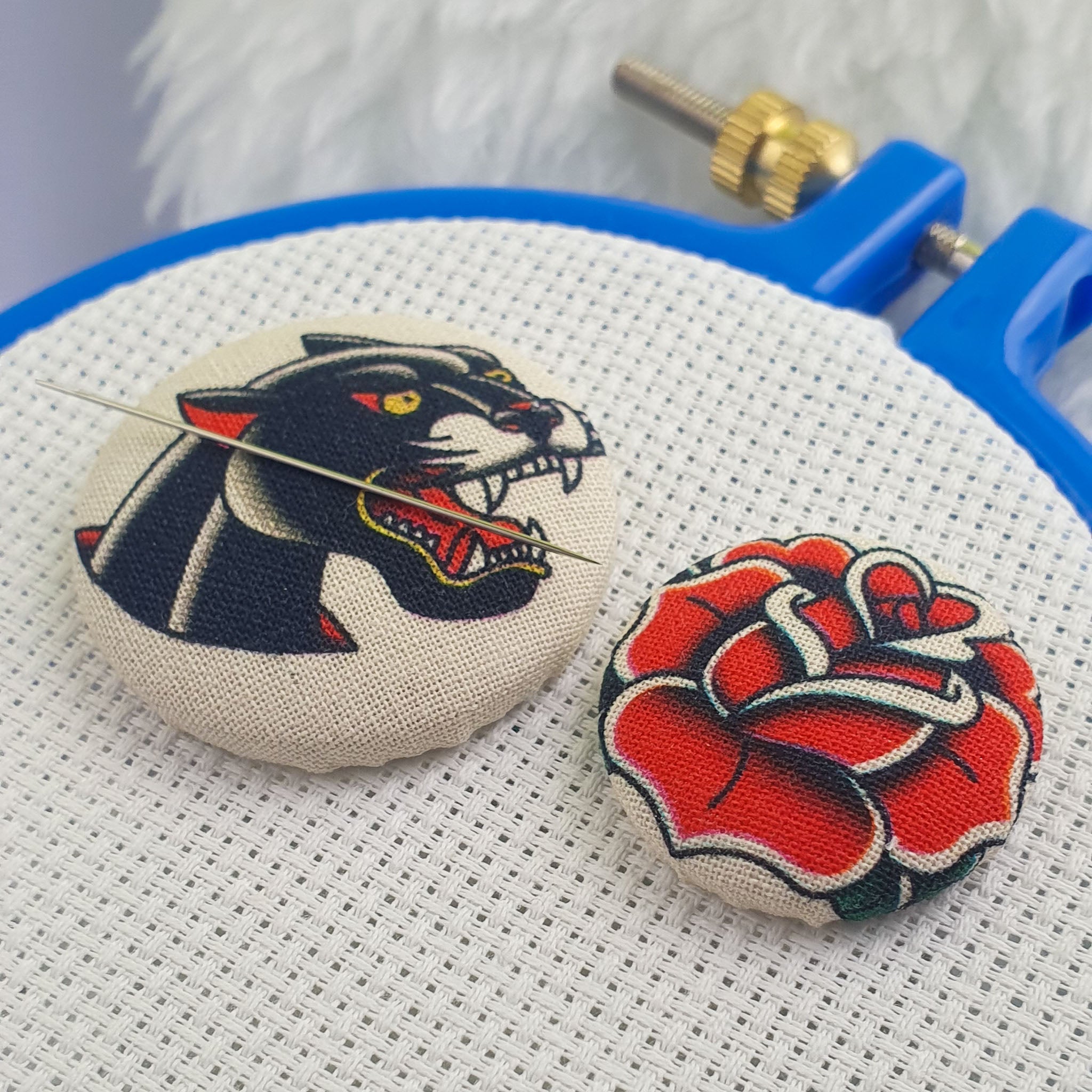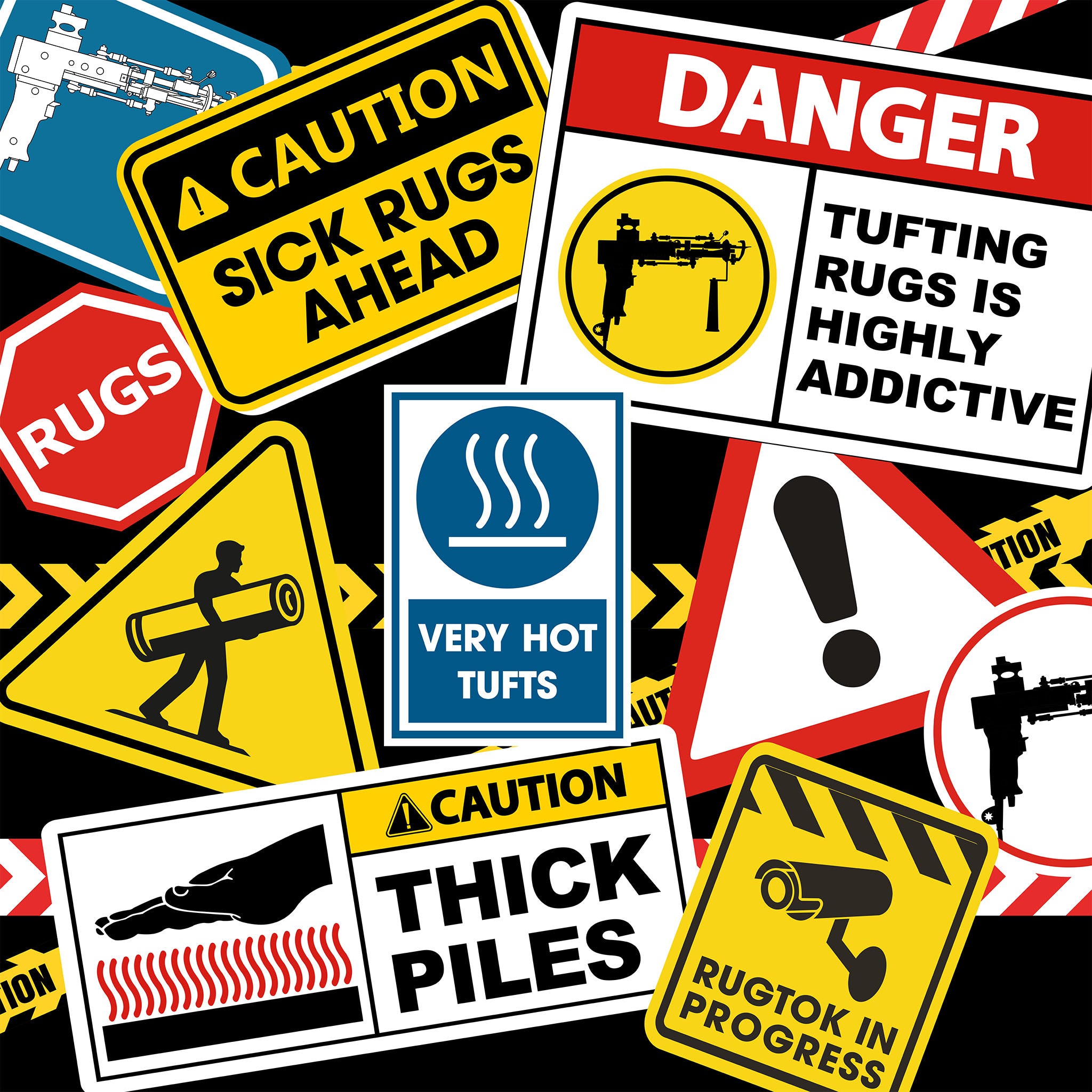When it comes to rug making there is one glue that takes the top spot - Liquid Latex.
Latex is the most commonly used adhesive for sealing hand-tufted rugs and latex backing is used on 95% of carpets worldwide. Ready to find out why?
This 5 minute guide will tell you all you need to know about liquid latex. You’ll find out about the two main types of latexes including; where they come from, their unique properties and what makes them a great choice for tufted rugs.
What is natural liquid latex?
Natural latex is an organic raw material that comes from trees and thousands of flowering plant species (including dandelions! 🌼). Although latex is found in about 10% of all plants, more than 99% of the world’s natural latex comes from the Hevea Brasiliensis tree species - commonly known as the rubber tree or Pará rubber tree.

Latex is a milky, runny liquid which when exposed to air coagulates. It is a complex mix of starches, sugars, tannin, resins, oils and gums that is created by plants as a natural defence against insects. If a plant is damaged it produces latex to seal and protect the area from insect attacks.

How is latex harvested?
Harvesting latex from rubber trees starts with a process called “tapping”. Tapping involves scoring or cutting into the bark of the tree, a small amount of bark is then removed to allow the latex to seep out and be collected.

The tapping process is incredibly precise as the consumption must not kill the tree or stunt its growth. The lifespan of rubber trees in plantations is over 30 years and they can reach heights of over 30 metres.

Latex solidifies quickly so it must be collected before it coagulates. Collected latex is stored in air-tight containers or tanks to preserve its liquid state. After collection ammonia is added to the latex to prevent it from solidifying.
What is natural latex used for?
Natural latex is used to create “liquid latex”, a solution of raw latex from the tree, water and a small percentage of ammonia (<1%). Liquid latex with low concentrations of raw latex (e.g. more water!) is used in the special effects industry for creating SFX makeup, masks, bald caps and prosthetics. It is also used in many casting and mould-making applications. Liquid latex with high concentrations of raw natural latex is used as an adhesive for sealing hand-tufted rugs and manufactured carpets.
The most common application for latex is however - rubber! To produce final natural rubber, latex goes through varying treatment processes, such as centrifugation, compounding and vulcanization. Different chemicals and fillers are added to the latex depending on its end use. Soft and stretchy rubber is used in products like pencil erasers, balloons, paints, condoms and medical gloves. Hard rubbers have a multitude of uses for example fibre-optic cables, pipes, waterproof liners, wellies and inflatables.
Is liquid latex safe?
Liquid latex is an organic, natural product which is not hazardous to health or the environment. It’s used in the production of medical goods, moulds and even applied directly to the skin by SFX make-up artists. Due to the presence of small amounts of ammonia (<1%), liquid latex may cause mild irritation on contact with eyes and skin, or mild irritation to the nose in the event it is used in a room without adequate ventilation.
Like many other things occurring in the natural world, such as animals, food and pollens, latex is an allergen. People with latex allergies must avoid exposure to liquid latex.
Is liquid latex eco-conscious?
Natural latex is a sustainable, renewable, carbon-negative and an eco-conscious choice of material.
Only a small amount of bark is removed to harvest the latex and no trees are cut down. Trees naturally heal the incisions with the lifespan of rubber trees in plantations being around 32 years - 7 years of growing followed by 25 productive years. Harvesting the latex and using the product has a low environmental impact, the rubber tree is an ecologically sustainable crop which helps to maintain the global carbon balance.

Does liquid latex smell?
Liquid latex has a characteristic smell, this is because it contains a small amount of ammonia which increases the shelf life and controls the pH of the solution. Ammonia is not a VOC but it does have a distinct odour which is similar to that of cleaning products, some people describe the smell as being sharp or caustic. Most liquid latexes have a mild smell which dissipates quickly as they dry.
Why is liquid latex a great choice for tufted rugs?
Liquid latex has fantastic properties for sealing the tufts on a rug! Here are some of the reasons why it is the most popular adhesive:
- Liquid consistency - liquid latex is able to penetrate the primary tufting fabric ensuring even coverage of the rug pile and a bond with every thread of yarn.
- Dimensional stability - latex helps the rug maintain its original size and shape over time.
- Flexibility - It makes rugs more flexible, so they are easier to roll up and transport, great for shipping rugs to customers or when you're moving to a new home.
- Non-Skid - Rugs backed with latex have natural non-skid qualities, there’s no need to apply additional non-slip backing fabrics.
- It works! - Liquid latex is safe to use with all types of yarns, any type of secondary backing and any type of flooring surface e.g. carpet, hard-wood and even heated floors!
What is synthetic liquid latex?
Synthetic latex is a man-made version of natural latex. It is artificially produced through chemical processes using petroleum-based compounds.
It is the most commonly used substance in the manufacturing of floor carpeting at an industrial level, used to bind layers in carpets and fuse the face yarn to backing. Synthetic latex has become an industry standard as it is cost-effective, has a good tuft bind and often provides greater strength and stability than natural rubber latex.
Some examples of synthetic latex include Tuft the World’s Carpet Backing Adhesive, AAT1132 and Roberts 3095.
Is synthetic liquid latex safe?
The most common synthetic latex adhesive is Styrene-Butadiene Rubber (also known as “SBR” or “CSBR”):
- Styrene - The International Agency for Research on Cancer (IARC) considers Styrene to be a category 2A “probably carcinogenic to humans”. Under REACH styrene is classified as a reproductive hazard.
- Butadiene - Butadiene is a highly reactive volatile organic compound (HRVOC) which the IARC has designated as a Group 1 carcinogen and mutagen. Specific cancers include leukaemia and lymphoma.
- 4-PCH - 4-Phenylcyclohexene is a toxic byproduct from the polymerization of styrene and butadiene. 4-PCH is a semi-volatile compound and a suspected carcinogen. 4-PCH is known as the chemical which creates that “new carpet smell”. That smell is the off-gassing of VOCs. 4-PCH further reacts with ozone (O3) to produce formaldehyde, a highly toxic human carcinogen.
Although modern synthetic latexes contain volatile organic compounds, carpets and rugs are far from being the only sources of VOCs in our homes. We use thousands of products that emit VOCs, among them being many common household, gardening and kitchen products.
If you plan on tufting regularly and want to limit your exposure to VOCs, avoid sealing your tufts using synthetic latex adhesives altogether. Even SBR/CSBR latexes advertised as ‘low emissions’, ‘no VOC’, ‘low VOC’, ‘zero VOC’, ‘water-based’, ‘non-toxic’, ‘harmless’ and ‘safe’ still risk the same exposure to VOCs and formaldehyde.
Is synthetic liquid latex eco-conscious?
The manufacturing of synthetic latex requires petroleum-based chemicals which are carbon-intensive, not sustainable and produce enough toxins to make an environment inhabitable. Synthetic latex is also much more environmentally harmful at the end of a product's lifecycle, it is a major obstacle to recycling. Combustion products from SBR are highly toxic, and require both high temperature and excess oxygen environments in order to decompose completely. In terms of decomposition without specialised incineration, to put it in perspective, a condom made of natural latex will take approximately 50-100 years to biodegrade whereas a synthetic latex condom may take 500 years to millennia!
Should i choose synthetic or natural liquid latex for my tufted rug?
Both synthetic and natural liquid latex have great functionalities as primary tufting adhesives. Both varieties of latexes bind well to seal the tufts of yarn securely in place.
Synthetic latex dominates over its natural counterpart in industrial and commercial applications because of its faster dry/cure times, greater strength and substantially lower cost. However, synthetic latex is often less flexible than natural latex and it can deteriorate with age, being more prone to crumbling, breaking down and delamination over time (a condition where the secondary backing becomes separated from the primary backing).
Natural latex is a sustainable, renewable, carbon-negative and an eco-conscious choice of material that has fantastic properties for sealing hand-tufted rugs. Natural latex is safe, non-toxic and contains no carcinogens or VOCs, making it a far superior choice for the health conscious tufter. Although natural is far safer than SBR latexes, it is an allergen. Tufters with latex allergies should opt for glues that do not contain any latex proteins (it’s always best to check with the manufacturer or supplier as to whether their product is safe for you to use).
Tuftbox only distributes liquid latex that is made from raw natural latex. If you’d like to find out more about liquid latex including how to apply it to your rug, check out these FAQs on gluing tufted rugs.
Happy Tufting!
Credits to photography artist Isuru 🇱🇰 for the stunning photographs of raw latex tapping, check out their work here.



